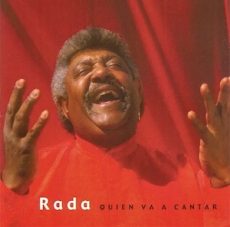
Daily Dose Of Jazz…
Ivor Mairants was born in Rypin, Poland on July 18, 1908 and moved with his family to the United Kingdom in 1913 where he attended Raine’s Foundation School in Bethnal Green. He began learning the banjo at the age of 17 and became a professional musician three years later.
In the 1930s he was a banjoist and guitarist for British dance bands led by Bert Firman, Ambrose, Roy Fox, Lew Stone, Geraldo, and Ted Heath. In 1950 Mairants established the Central School of Dance Music in London, England which he ran for 10 years. All instruments were taught at this establishment, but emphasis was given to guitar. Among the teaching staff at the school were Johnny Dankworth, Jack Brymer, Kenny Baker, Bert Weedon and Ike Isaacs, and Eric Gilder. In 1960 Mairants handed the school over to Gilder, who renamed it as the Eric Gilder School of Music.
In the Sixties and Seventies his guitar playing was often heard on television, radio, film soundtracks, and many recordings with the Mantovani orchestra and with Manuel and his Music of the Mountains. His 1976 recording of the Adagio from Joaquin Rodrigo’s Concierto de Aranjuez with Manuel sold over one million copies.
He wrote many occasional pieces for jazz bands, was a columnist for Melody Maker, BMG, and Classical Guitar, and was a member of the Worshipful Society of Musicians, a British guild, and a Freeman of the City of London. In 1997 the Worshipful Society inaugurated an annual competition for the Ivor Mairants Guitar Award.
Guitarist, composer and teacher Ivor Mairants, who with his wife Lily in 1958 he created the Ivor Mairants Musicentre, a specialist guitar store in London, died on February 20, 1998.
More Posts: composer,educator,guitar,history,instrumental,jazz,music

Daily Dose Of Jazz…
Omar Ruben Rada Silva was born July 16, 1943 in Montevideo, Uruguay. Little is known about his early life but his sound comes from his exposure to the music of his country, a chorus of tamboriles and Uruguayan barrel drums.
In 1965, he and Eduardo Mateo formed the band El Kinto Conjunto. This was the first group in Uruguay to create the beat genre in Spanish and to fuse rock with Latin American musical styles. In 1969 the success of his Candombe song Las Manzanas (The Apples) led to his first solo album and participation in the Festival of Popular Music in Rio de Janeiro, Brazil. A year later he formed the band Tótem.
In 1977, he traveled to the United States after an invitation by the Fattoruso Brothers to play with the group OPA. Over the next year, he performed with Tom Scott, Ray Barretto, Hermeto Pascoal, and Flora Purim.
Settling in Mexico for three years beginning in 1991, Rubén worked as a composer and arranger for local musicians such as Mijares, Eugenia León, Stephanie Salas, and Tania Libertad. In 1994 he shared the spotlight with Sting and UB40 at the Palacio de Deportes in Mexico City.
Rada’s renown led him to record on international labels and his songs have been played worldwide and have been recorded by Milton Nascimento, Herb Alpert, and Lani Hall. He was invited by Jon Anderson and Joan Manuel Serrat to appear on their albums Deseo and Utopía, respectively.
He has voiced the part of Lucius Best/Frozone in the 2004 Argentinian dubbing of The Incredibles. Ruben has directed radio and TV shows, and has starred in the television sitcom La Oveja Negra (The Black Sheep).In 2010, the third round of the series LifeLines in Berlin paid tribute to Rubén Rada. That same year he recorded a show in the Argentine program Encuentro en El Estudio, which is run by that country’s Ministry of Education.
Percussionist, composer, singer and television personality Ruben Rada, who has recorded more than thirty albums, continues to perform, compose and record.
More Posts: bandleader,composer,history,instrumental,jazz,music,percussion,vocal

Daily Dose Of Jazz…
Graham Peter Hall, generally known as GP Hall was born July 15, 1943 in Hampton Hill, London, UK. Schooled in classical, flamenco and jazz, he went on to develop his skills as a guitarist in the British blues boom of the late 1960s. As a teenager, he played in the Odd Lot Band and set up the Odd Lot Club as a venue for their music, which in turn attracted more established bands and players for concerts.
As he became better known, Hall went on to play at more celebrated London venues including The Roundhouse, the Middle Earth club and took up residency at the 100 Club. He supported the likes of Deep Purple, The Hollies, and Chris Farlowe and played on stage with original American blues heroes John Lee Hooker and Sonny Boy Williamson.
In the early 1970s he studied with renowned flamenco guitarist Manitas de Plata and subsequently became involved in more avant-garde work, writing, producing and performing. GP was commissioned by the South Hill Park Arts Centre to write The Estates which was a large and complex musical piece. Scored for a large ensemble, it was recorded and released on album by Prototype Records in 1972. It was his debut recording.
At around this time, Hall’s promising career was cut short by personal trauma. This led to alcoholism, depression, periods of homelessness, loss of confidence and self worth. It would be more than a decade before he returned to music. During the 1980s he began returning to music but it was a slow process to becoming sober.
He would go on to compose, record and release seventeen albums to various labels as well as his own self-releases over the next thirty-three years. His last self-released album in 2019 is titled Be Strong. Guitarist, composer and improviser GP Hall continues to explore the realms of music.
More Posts: bandleader,composer,guitar,history,improviser,instrumental,jazz,music

Daily Dose Of Jazz…
Sara Jacovino was born on July 9, 1983 and earned both a Bahelors and Masters degree in music from the University of North Texas. While there she studied composition with Neil Slater and Paris Rutherford and trombone with Steve Wiest and Tony Baker.
Since leaving Texas for New York City, she has entrenched herself in the jazz scene as a trombonist, composer, and arranger. who has drawn the recognition of many of her peers nationwide. She has received awards from the BMI Foundation, Downbeat Magazine, the Airmen of Note, The International Trombone Association and among others.
Sara leads her own quartet and is a member of The Birdland Big Band, The Diva Jazz Orchestra, David Berger and the Sultans of Swing, Band of Bones, The Manhattan Bridges Orchestra, and The Afro-Bop Alliance. She is an active musician in the Broadway scene performing in numerous musical productions and currently holds the tenor/bass trombone chair in “Tina, The Tina Turner Musical” at the Lunt-Fontanne Theatre.
A sought after session musician as both a lead/section trombonist and soloist. Her writing and playing is often featured by the Birdland Big Band, The Diva Jazz Orchestra, and can be heard on numerous albums by the University of North Texas One O’Clock Lab Band including: “Lab 2008,” “Lab 2007,” “Lab 2006” and “Live at Blues Alley, and by the award winning UTubes Jazz ensemble.
She enjoys working as a guest artist and clinician for University and High school jazz programs. Sara will be a guest performer and clinician at both the International Trombone Festival in 2021 and IWBC Festival in 2022.
Trombonist Sara Jacovino continues to perform, compose, arrange and continues to accept commissioned works.
More Posts: arranger,bandleader,composer,history,instrumental,jazz,music,trombone

Daily Dose Of Jazz…
Lembit Saarsalu was born July 8, 1948 in Roosna-Alliku, Estonia. He started playing jazz at an early age. He debuted at the Tallinn International Jazz Festival at the age of 16. He worked for many years in the State Philharmonic of the Estonian SSR , where as a paid musician he gave numerous concerts both at home and abroad. In the 1980s, Saarsalu devoted himself completely to jazz.
For decades, he has led local and international ensembles. He worked in a duo with Leonid Vintskevich, started a new international jazz festival Rainbow Jazz with music producer Merle Kollom and a competition for young musicians in Tartu.
As an educator Saarsalu introduced jazz in schools and has performed together with Olav Ehala and other well-known Estonian musicians for more than 40,000 students. Since the fall of 2016, he has been working as a saxophone and ensemble teacher in the rhythm music department of the Tartu Music School.
In the 1980s Eesti Televisioon made two films about Lembit, he has performed on Finnish and Spanish television and has made numerous recordings, numbering 200 recordings for Estonian Radio. His style ranges from blues and swing to free forms of jazz.
He has been repeatedly chosen as the best tenor saxophonist, awarded the annual prize of the Sound Art Endowment Fund of the Estonian Cultural Capital.
Saxophonist , bandleader and composer Lembit Saarsalu, who has been called the saxophone king and the calling card of Estonian jazz, continues to perform, compose and teach.
More Posts: bandleader,composer,history,instrumental,jazz,music,saxophone


